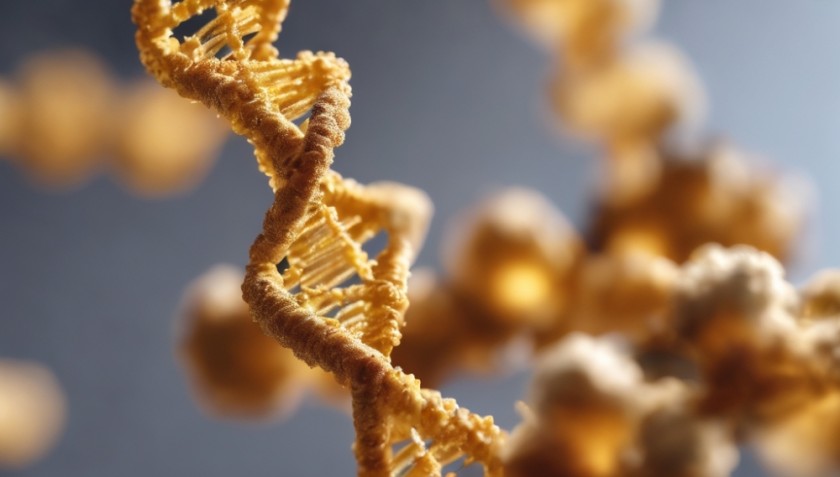

The unsustainable harvest of Boswellia sacra, a genus known for producing frankincense, poses a significant threat to its survival. It is estimated that over 70% of these trees could die within the next 25 years if current harvesting practices continue. To address this issue and gain a better understanding of the Burseraceae family, including the Boswellia genus, researchers have performed an RNA-Seq and whole genome sequencing of B. sacra.

A research study has been conducted at the Natural and Medical Sciences Research Center, University of Nizwa, to publish the complete genome sequence (complete genomic assembly) of the Omani frankincense-producing tree for the first time.
In this study, a high-quality reference genome of the Frankincense tree was obtained with a haploid genome size of 667 million base pairs. This genome has about 18,000 protein-coding genes that perform different functions in the plant’s cells.
This genome sequencing effort is crucial for studying the genetics of frankincense and myrrh, as well as for improving sequence datasets in the Sapindales order, which includes over 7,500 species across nine families. Only 16 genomes have been sequenced in this diverse group so far.
The results of this study were compiled over nearly five years of continuous efforts with the help of internationally recognized scientists from seven different universities and leading research centers.

The genome of the Omani frankincense tree (Boswellia sacra) was found to be approximately 45 percent larger than the genome of the 367 million-base orange trees, roughly 29 percent larger than the grape tree, 28 percent larger than the papaya tree, and 36 percent larger than the cashew tree, which is considered to be the closest tree with the complete genome published.
In this study, the research team made a groundbreaking discovery about how the frankincense tree responds to injury and cutting by releasing hormones and other metabolites that trigger the production of the resins. Here, they have also revealed the complete genomic map, decoded the genetic sequence, and studied the evolution of the frankincense tree. The first genome sequence of the frankincense tree was discovered through this successful endeavor, which took a lot of time, effort, dedication, and resources, which is similar to the process of extracting high-quality DNA from resinous trees, in addition to the tremendous effort in analyzing this large amount of bioinformatics-related work to get the whole genome assembly.
The research activities of the Natural and Medical Sciences Research Center carried out in the past few years have clearly formed the first nucleus for understanding the Omani frankincense tree (Boswellia sacra), as they helped to answer many scientific questions related to the following topics:
a) History and origin of the tree
b) Complete genomic sequence of the tree
c) The biosynthesis pathways of resin production and its main components
d) Biological, chemical, and physical variations along with related species.
e) Transcriptome analysis of Boswellia sacra unveiled genes linked to terpenoid biosynthesis, phytohormonal regulation, and cell-wall synthesis.
GENETIC DIVERSITY, WOUNDING RESPONSE
One of the key areas the research explored is the wounding response in B. sacra, which is essential for frankincense production. Understanding this response may aid in stem regeneration processes, with a focus on the role of jasmonic acid and salicylic acid as key regulators.
The genetic diversity and population structure of Boswellia sacra, or frankincense tree, are facing a serious threat due to unsustainable resin harvesting practices. This unsustainable exploitation of resin makes these trees vulnerable to attacks by mites, beetles, and fungal pathogens. Most of these trees are found in the Dhofar region of Oman, where thirteen distinct populations have been identified in three different areas: central, western, and eastern Dhofar.
To understand the population structure of B. sacra, researchers sequenced chloroplast DNA from twenty trees representing the thirteen populations. Specifically, they examined the sequences of trnG-psbA, rbcl, ycf, and rpoC1 genes designed for B. sacra. The data analysis using STRUCTURE software revealed the presence of four main population clusters, with the highest delta K at K = 4. The primary clade contained over 64.1% of genotypes from eastern and western populations, all located along the Arabian Sea coast. The other three clades were geographically dispersed.
To investigate the tree’s response to wounding stress, selected trees were exposed to various durations of wounding stress, and their levels of endogenous salicylic acid (SA) and jasmonic acid (JA) were compared to control trees. The results showed a significant increase in JA levels during wounding, peaking at 12-fold higher than controls, while SA also exhibited a similar trend but at lower concentrations.
To delve deeper into the wounding response, RNA-seq analysis was performed on wounded and unwounded stem tissues, identifying 1,451 upregulated differentially expressed genes (DEGs). Among these, 118 were known wounding response-related genes from other plants. These DEGs were associated with processes such as cell-wall biology, defense mechanisms, carbohydrate metabolism, and oxidative stress responses.
Quantitative real-time PCR validation confirmed the upregulation of DEGs involved in terpenoid synthesis, cell wall function, and development during wounding. Additionally, the application of exogenous JA after wounding activated specific genes associated with cell wall fortification.
The study suggests that the wounding response in B. sacra, crucial for frankincense production, involves the upregulation of genes related to defense, cell wall strengthening, and terpenoid synthesis. Furthermore, the study highlights the importance of phytohormones like JA in regulating these responses, indicating that calcium and other phytohormones play significant roles in long-distance signaling during tissue damage. Understanding these processes is essential for the conservation and sustainable management of frankincense-producing populations facing the threat of overharvesting.
Resin derived from Boswellia trees plays a crucial role in their defense mechanisms against wounds and pathogens. This resin, comprised of over 300 chemical constituents such as monoterpenes, diterpenes, and triterpenes, is synthesized through two pathways: the methylerythritol 4-phosphate (MEP) or mevalonic acid (MVA) pathways. These pathways converge at farnesyl diphosphate, a key precursor in triterpenoid biosynthesis. The Cytochrome p450 family, especially subfamily CYP71, is involved in modifying terpene-based resin components, with some genes like CYP72A and CYP716B1 playing vital roles in resin acid formation.
Upon wounding, terpenoid synthesis is significantly activated, including terpene synthase (TPS) activity, which is essential for resin acid production. In Boswellia sacra, 16 TPS genes were identified. Terpenoid biosynthesis pathways are also linked to defense signaling in various tree species.
Additionally, genes related to amyrin synthesis, a precursor of boswellic acid and a significant component of frankincense, were found to be upregulated during wounding. The analysis revealed a total of 17 genes involved in amyrin synthesis in B. sacra.
Furthermore, genes related to wounding stress and cell-wall biogenesis were examined. While some genes had orthologous counterparts in other species, B. sacra showed unique paralogous genes related to pollen allergies and cell wall development.
Utilizing the existing experimental insights and extending their application to wider-scale field trials has the potential to address the issue of dwindling tree populations not only in Oman but also in various other communities. This approach is crucial for securing a sustainable supply of frankincense, especially in light of anticipated market-driven challenges that were predicted to lead to its depletion in the coming decades.
Oman Observer is now on the WhatsApp channel. Click here



